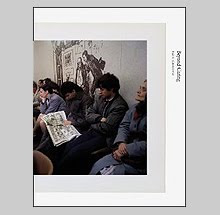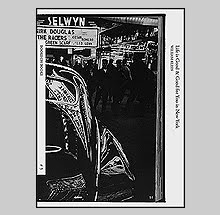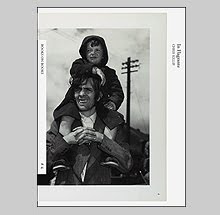Useful Photography #003

Useful Photography #003 is a book of portraits.
Useful Photography #003 is a book of captions.
Useful Photography #003 is a book of your imagination.
Published by Artimo in 2003, this is a paperback collection of 87 portraits of people who have been reported missing in the UK. It was collected and edited by Hans Aarsman, Claudie De Cleen, Julien Germain, Erik Kessels, and Hans Van Der Meer.
It is composed of casual portrait photographs that would be found in any snapshot album, all of which where originally taken or are cropped to emphasize one person. On the facing page is some information.
Carmel Fenech – Age at disappearance: 16
Disappeared from home in Crawley, Sussex on Saturday 23rd May, 1998. Talked about working in the travel industry. 5ft tall with black bobbed hair, brown eyes, olive complextion, 2 inch scar in the middle of her forehead.
This is why I say that this is a book of the imagination. We see the portrait and read the caption and then we look at the portrait again, this time, looking for clues. We immediately start concocting stories. Do they “look” like the type that would commit suicide? Were they abducted? Did they escape to a new life? Were they murdered? This is a photobook that acts almost entirely cerebrally.
It acts cerebrally in perverse ways too. I found myself arriving at questions about the mode of the disappearances that, at times, were truly disturbing. For instance, why did I just think that the woman in the picture was abducted by force? Was it a sexual thought? Is it because I think she is attractive? Why did I think that man was probably killed? Because I don’t like the way he looks in the picture? Did I think he committed suicide because he looked weak in the photo?
I may be letting out more information about my thought process than you may be comfortable with, but this is the way I think this book works. It taps into something very subconscious within us.
The book states that the photos have taken on vital significance from their original intent because they are now being used by the National Missing Persons Helpline (NMPH). And they do. These are pictures made to remember fun times or were made to record who is in our family. Knowing what is to come creates a disconnect between picture and caption and that disconnect weighs heavily.
One interesting fact of the pictures is that all are records of how people react to a camera’s presence. Most smile, some with a hint of embarrassment. Some seem caught in the midst of “preparing” to be photographed. Since most people are not used to being photographed, there is generally a moment just before the shutter releases where the subject’s mind is very active in thought. Will I look silly? I’m trying to look “good,” I want to be attractive, so I smile. Or I act silly to nullify the possibility that I will actually look silly while I attempt to look serious. The results are surprisingly universal.
This is a book that I thought would strike one note and just repeatedly strike that same note page after page. In essence it does, except when you pay attention to what is going on in your head.
Book Available Here











